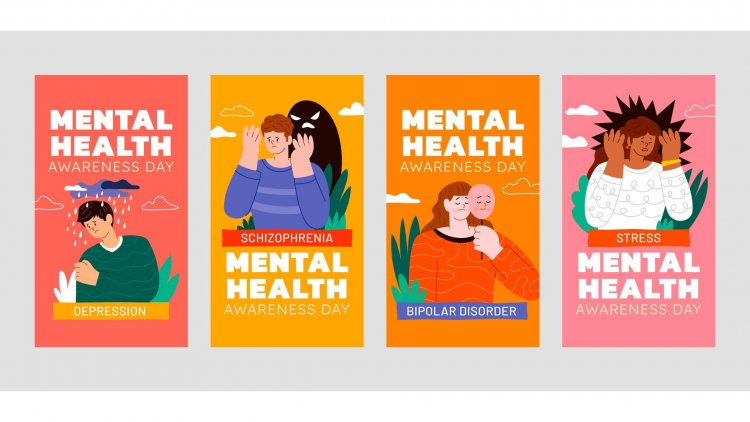Breaking the Chains: Unraveling the Mysteries of Mental Health Care Barriers
Despite growing awareness about mental health, significant barriers persist that keep effective care out of reach for many. The journey to accessing mental health services is fraught with challenges that extend beyond mere availability. These barriers can range from systemic issues and financial constraints to stigma and personal circumstances. Understanding these obstacles in detail is crucial for developing strategies that can break down these walls and pave the way for more inclusive mental health care.

Systemic Challenges: Navigating a Fragmented System
One of the most significant barriers to mental health care is the fragmented nature of the healthcare system itself. In many places, mental health services are not integrated with primary care, leading to disjointed and often inefficient care. This fragmentation can result in several issues:
- Limited Coordination: Without a cohesive system, patients may receive care from multiple providers who are not communicating effectively. This lack of coordination can lead to redundant tests, conflicting treatments, and gaps in care.
- Referral Difficulties: Navigating referrals and accessing specialized care can be cumbersome. Patients often need to see several different practitioners, each requiring separate appointments and paperwork.
- Inadequate Funding: Mental health services frequently suffer from lower funding compared to other areas of healthcare. This financial disparity can lead to fewer available services, longer wait times, and reduced quality of care.
Financial Barriers: The High Cost of Care
The cost of mental health care is a significant barrier for many individuals. Even with insurance, out-of-pocket expenses can be prohibitive. Some key financial challenges include:
- High Costs of Therapy and Medication: Therapy sessions and psychiatric medications can be expensive, and not all insurance plans cover them comprehensively. This financial burden can discourage individuals from seeking or continuing treatment.
- Insurance Limitations: Many insurance plans have limited coverage for mental health services. This can include a restricted number of therapy sessions, higher copayments, or limited access to certain types of care.
- Lack of Sliding Scale Options: While some providers offer sliding scale fees based on income, these options are not universally available. For those without access to such options, the cost can be prohibitive.
Stigma and Misconceptions: The Social Obstacles
Stigma surrounding mental health issues remains a formidable barrier. Misconceptions and negative attitudes about mental health can significantly impact an individual's willingness to seek help. Key aspects of stigma include:
- Social Judgment: Fear of being judged or misunderstood by others can prevent individuals from seeking help. This is particularly acute in communities where mental health issues are still stigmatized or seen as a personal failing.
- Self-Stigma: Internalized stigma can lead individuals to feel ashamed of their mental health struggles, causing them to avoid treatment and hide their issues from others.
- Cultural Barriers: Different cultures have varying attitudes towards mental health, which can affect an individual’s willingness to seek care. In some cultures, mental health issues are viewed through a lens of personal weakness or spiritual failure.
Geographic Disparities: Unequal Access to Care
Geographic location can also play a significant role in access to mental health services. Rural and underserved areas often face unique challenges:
- Shortage of Providers: Rural areas frequently suffer from a shortage of mental health professionals, which can make it difficult for residents to access care.
- Transportation Issues: Lack of public transportation in rural areas can further hinder access to mental health services, especially for those without private vehicles.
- Telehealth Limitations: While telehealth has expanded access to mental health services, it is not a panacea. Issues such as unreliable internet access and lack of technological literacy can limit its effectiveness in underserved areas.
Personal Barriers: Navigating Through Individual Challenges
Individual circumstances can also impact one's ability to access mental health care. These personal barriers can include:
- Lack of Awareness: Some individuals may not be aware of the mental health services available to them or may not recognize the symptoms of mental health issues.
- Cultural and Language Differences: Non-native speakers or individuals from minority cultural backgrounds might face difficulties in finding providers who understand their cultural context or speak their language.
- Fear and Distrust: Previous negative experiences with healthcare providers or a general distrust of the healthcare system can prevent individuals from seeking necessary care.
Legal and Policy Issues: Navigating the Red Tape
Policies and regulations surrounding mental health care can either facilitate or hinder access. Some notable issues include:
- Complexity of Mental Health Laws: Understanding mental health laws and patients' rights can be challenging, and the complexity of these regulations can create barriers to accessing care.
- Inadequate Legislation: In some regions, laws and policies regarding mental health are outdated or insufficient, which can lead to gaps in care and support.
Moving Beyond Barriers: Strategies for Improving Mental Health Care Access
With the understanding of the various barriers that obstruct access to mental health care, it’s essential to explore practical strategies and solutions that can help dismantle these obstacles. Progress in mental health care requires a multifaceted approach, combining systemic changes, financial reform, social initiatives, and innovative practices. Here’s an in-depth look at potential strategies to break down these barriers and improve access to mental health care for all.
Integrating Mental Health into Primary Care
One effective strategy to overcome the fragmentation of mental health services is to integrate mental health care with primary care. This approach can address several issues simultaneously:
- Holistic Care: By integrating mental health services into primary care settings, patients receive comprehensive care that addresses both physical and mental health needs. This integration helps to ensure that mental health issues are identified and treated early.
- Streamlined Referrals: Coordination between primary care providers and mental health specialists can streamline referrals and reduce the complexity of navigating the healthcare system.
- Increased Accessibility: Patients are more likely to seek mental health care if it is available in a familiar and accessible setting, such as their primary care physician’s office.
Expanding Insurance Coverage and Financial Support
To mitigate financial barriers, expanding insurance coverage and providing additional financial support are crucial steps:
- Universal Coverage: Advocating for policies that provide universal mental health coverage can ensure that all individuals have access to necessary services regardless of their financial situation.
- Reducing Out-of-Pocket Costs: Implementing policies that lower out-of-pocket costs for therapy and medications can make mental health care more affordable for those who need it.
- Increasing Funding for Mental Health Services: Increased government and private funding can help expand the availability of mental health services and improve the quality of care.
Addressing Stigma through Education and Awareness
Combatting stigma is essential for encouraging more people to seek mental health care. Strategies to address stigma include:
- Public Education Campaigns: Launching campaigns to educate the public about mental health can help dispel myths and reduce stigma. These campaigns should focus on normalizing mental health issues and promoting empathy and understanding.
- Workplace Initiatives: Encouraging workplaces to implement mental health programs and offer support can help create a more accepting environment for employees dealing with mental health issues.
- Media Representation: Positive and accurate representation of mental health issues in the media can challenge stereotypes and foster a more supportive societal attitude.
Enhancing Access in Underserved Areas
To address geographic disparities and improve access to mental health care in underserved areas, several measures can be taken:
- Telehealth Expansion: Expanding telehealth services can help bridge the gap for individuals in remote or rural areas. Ensuring that these services are accessible and user-friendly is crucial for their effectiveness.
- Mobile Clinics: Deploying mobile mental health clinics to underserved areas can provide direct access to care for individuals who may otherwise have difficulty reaching traditional health facilities.
- Incentivizing Providers: Offering incentives for mental health professionals to work in underserved areas can help address the shortage of providers in these regions.
Building Personal Resilience and Awareness
Improving individual awareness and resilience is another key factor in overcoming barriers to mental health care:
- Educational Programs: Implementing educational programs that inform individuals about mental health symptoms and treatment options can increase awareness and encourage people to seek help.
- Support Networks: Developing strong support networks, including peer support groups and community organizations, can provide individuals with the encouragement and resources they need to access care.
- Cultural Competency Training: Providing training for mental health professionals on cultural competency can improve their ability to serve diverse populations and address cultural barriers effectively.
Reforming Legal and Policy Frameworks
Addressing legal and policy issues requires a focus on reforming existing frameworks to better support mental health care:
- Simplifying Regulations: Streamlining mental health laws and regulations can make it easier for individuals to understand their rights and access necessary care.
- Advocating for Updated Legislation: Supporting legislative efforts to update and improve mental health policies can help address gaps in care and ensure that mental health services are more equitable and effective.
Fostering Collaboration and Innovation
Finally, fostering collaboration and innovation within the mental health care system can lead to significant improvements:
- Collaborative Approaches: Encouraging collaboration between mental health professionals, primary care providers, and community organizations can enhance care coordination and improve patient outcomes.
- Innovative Solutions: Investing in research and development of new treatment methods and technologies can lead to more effective and accessible mental health care solutions.
By implementing these strategies, we can work towards breaking down the barriers that obstruct access to mental health care. Addressing these issues requires a collective effort from policymakers, healthcare providers, and communities. With continued advocacy and innovation, it is possible to create a more inclusive and effective mental health care system that serves everyone.
Disclaimer: The information provided in this article is for educational purposes only and should not be considered medical advice. If you have any health concerns or are experiencing symptoms, it is important to consult with a healthcare professional, such as a doctor or clinic, for proper diagnosis and treatment. Always seek the advice of your doctor or other qualified health provider with any questions you may have regarding a medical condition. Do not disregard professional medical advice or delay in seeking it because of something you have read in this article.
What's Your Reaction?





















